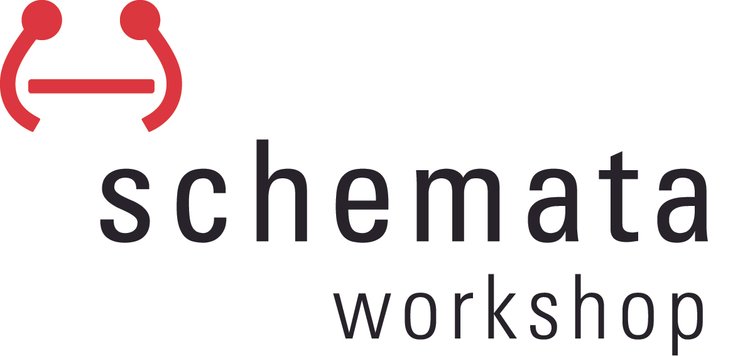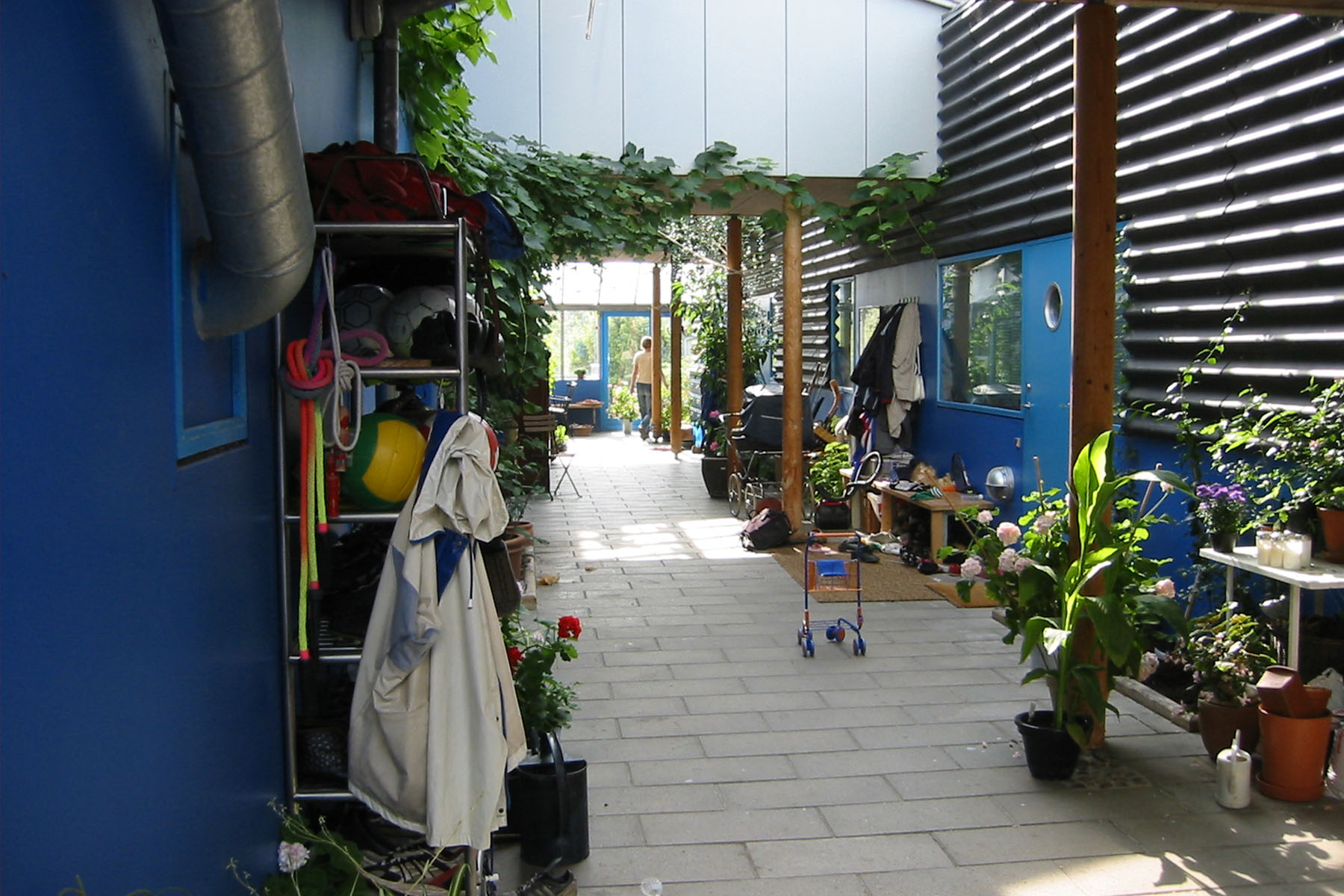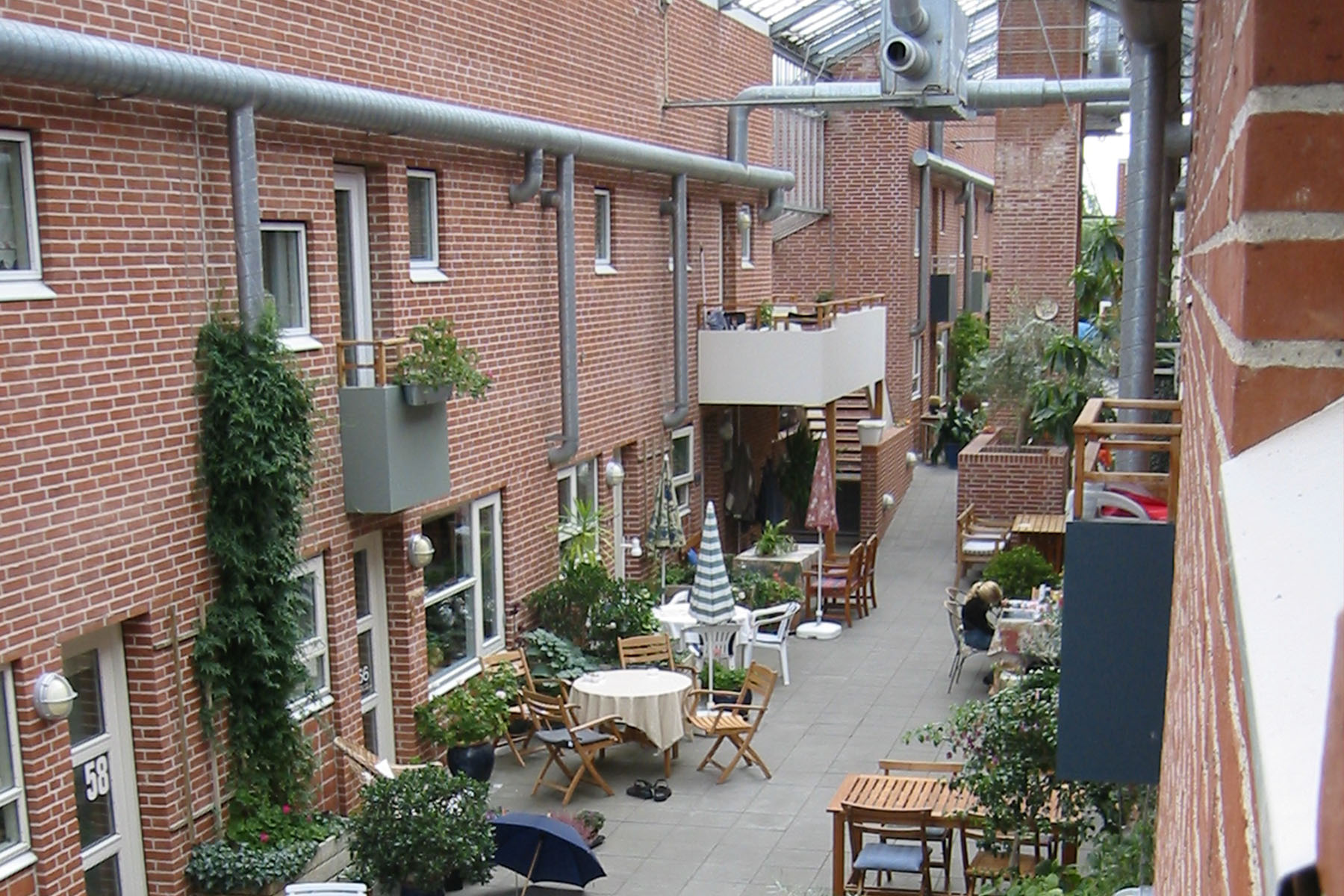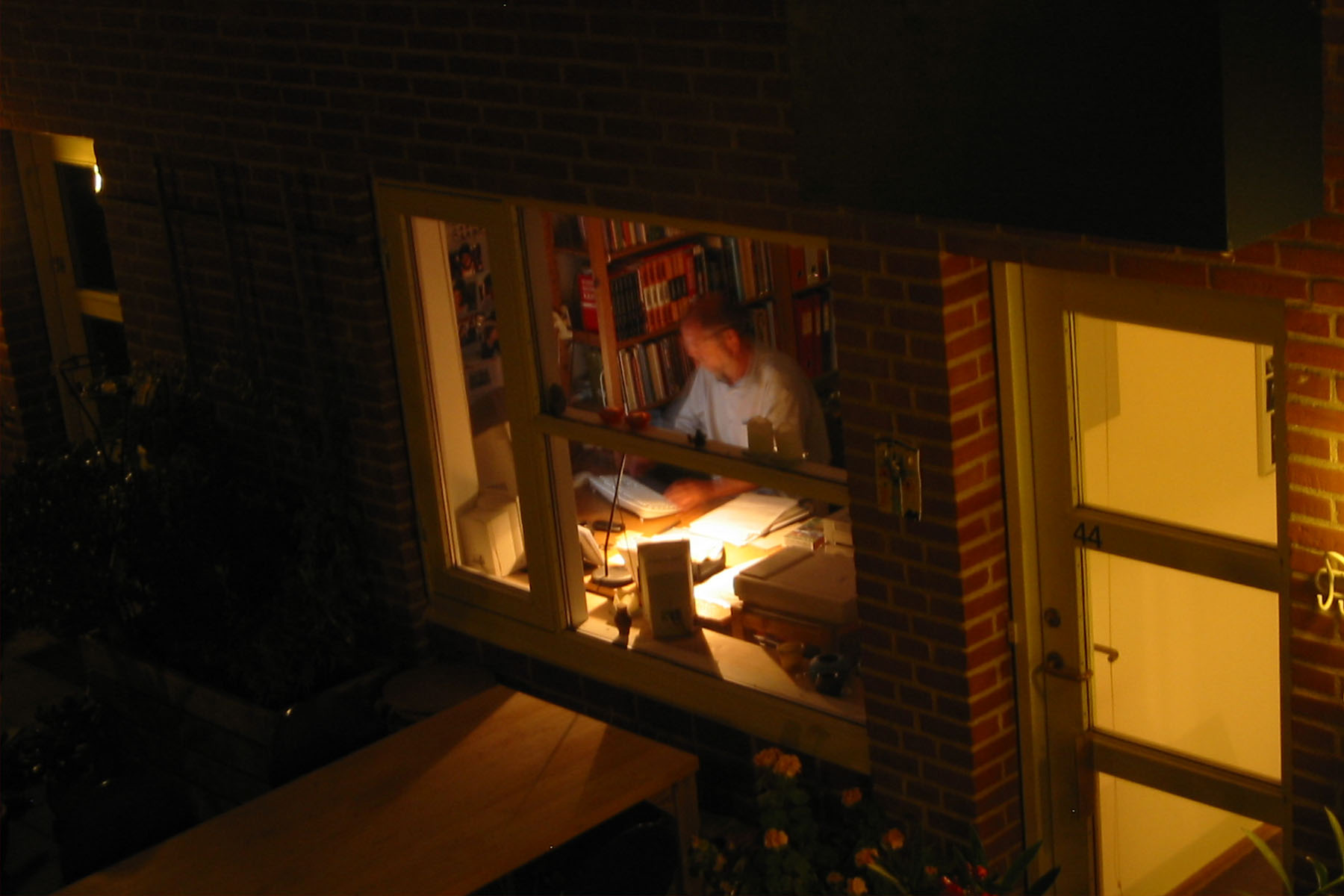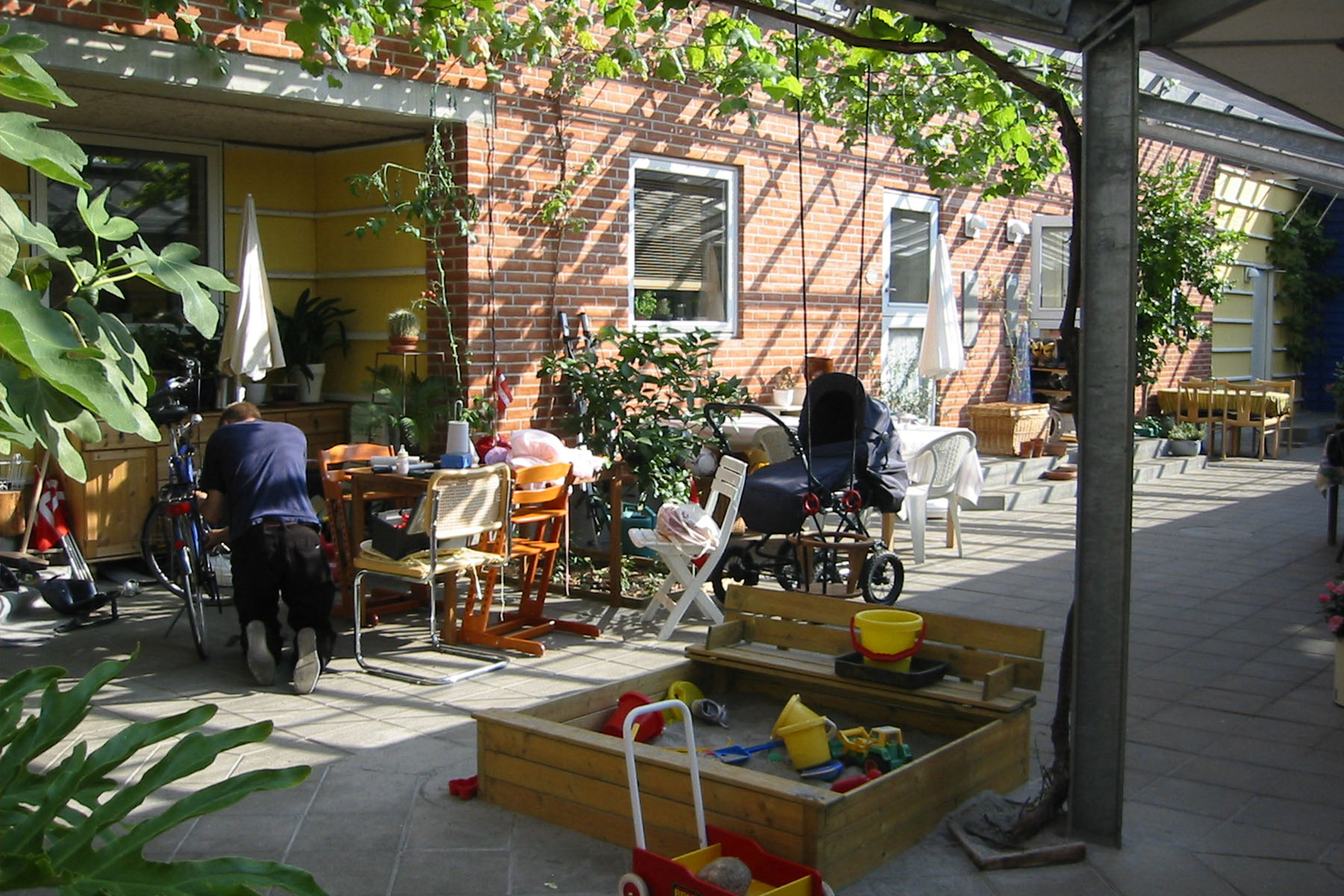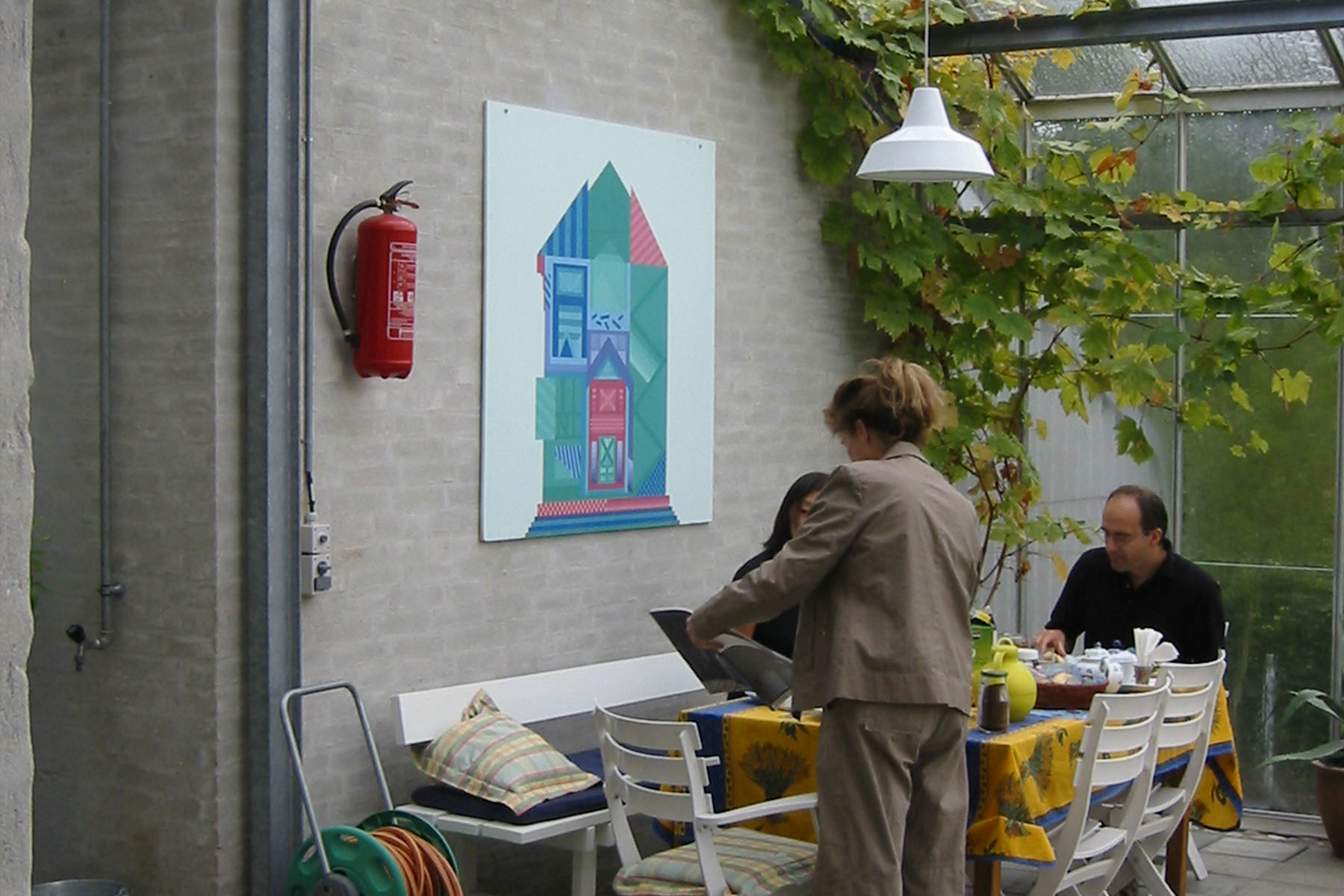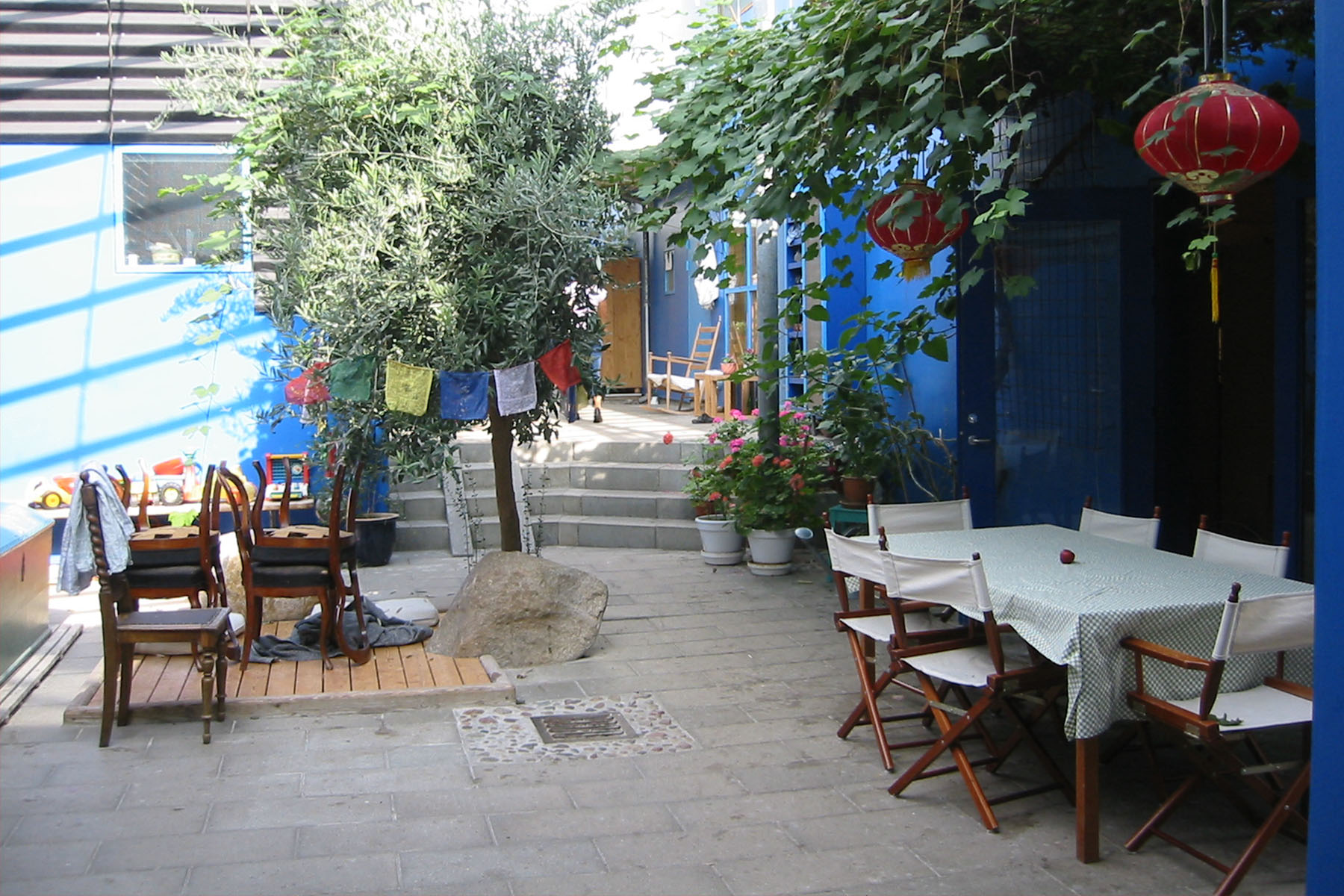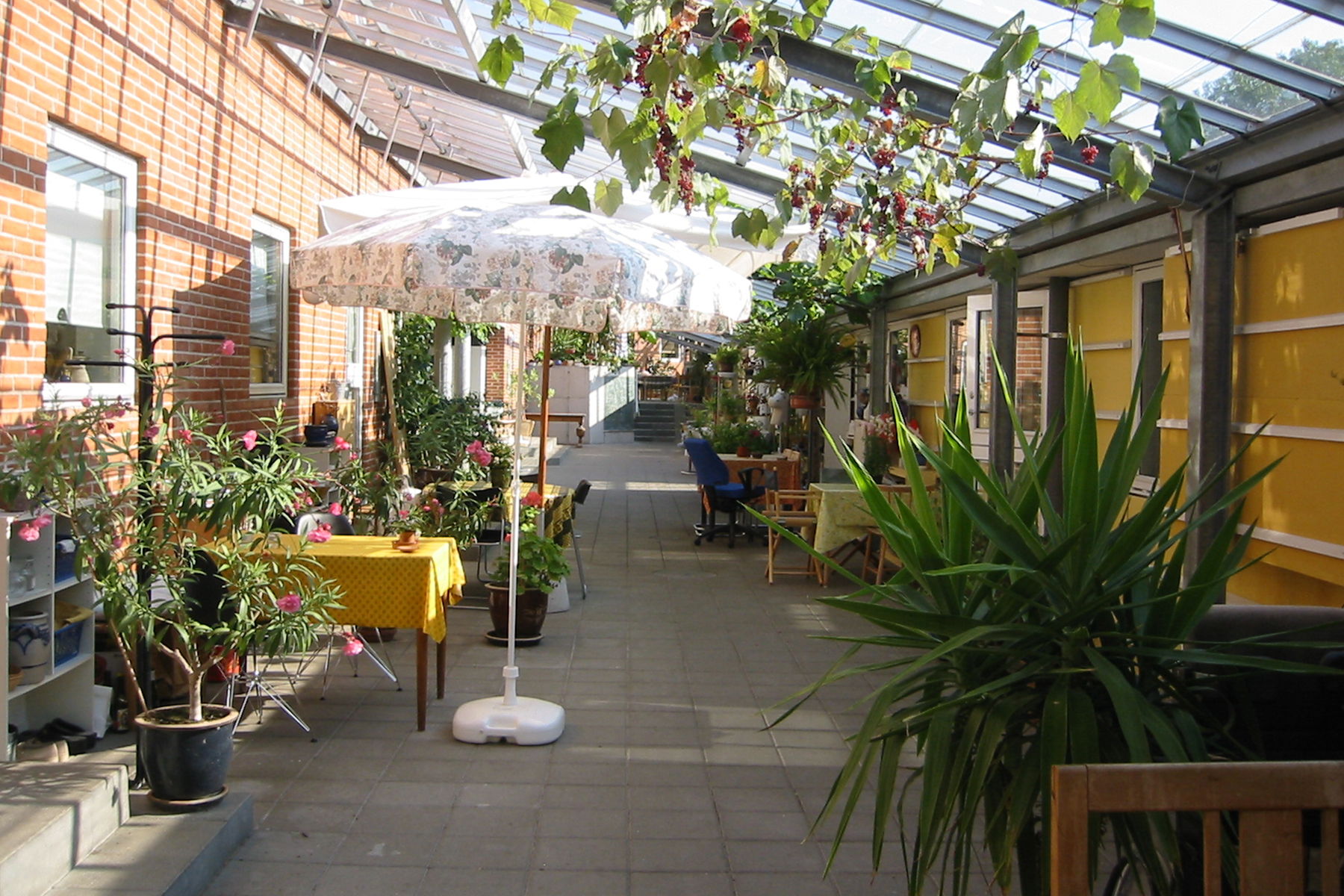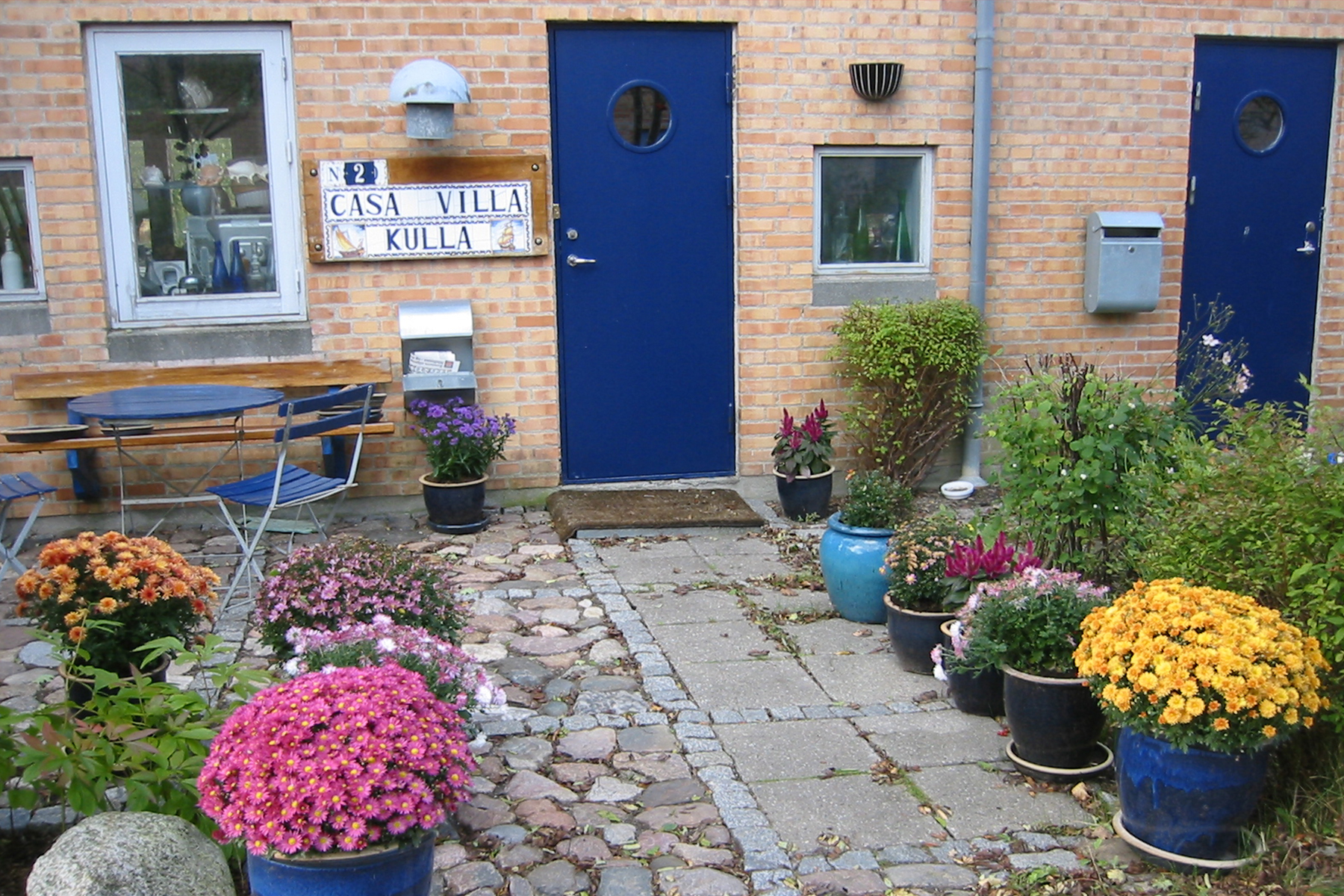Different families living in cohousing often take on roles within the larger group that promote the resilience of the community as a whole.
A Degree of Publicness discusses the tendency to be more public towards the physical center of the community. In my observations, it appeared that those residing closest to the Common House acted as gatekeepers – informally monitoring activity in the community. At Ådalen 1, while all families had a small table and chairs in the covered street, the family that lived closest to the Common House served role of gatekeeper. The male head of household often sat at his table in the early morning and late evening to drink coffee, read the paper, and smoke his pipe. Often, other residents would come to sit with him or his wife to engage in a brief conversation before dinner.
Similarly at Drivhuset, the residents that occupied the unit closest to the public entry into the covered street served as informal gatekeepers, helping visitors find their way. Likewise, the units facing the common path at Andedammen were the “eyes” of for the community due to their proximity to the community entrance as well as the Common House.
